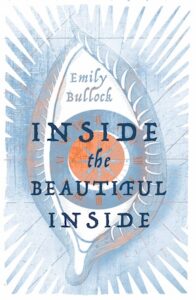Absolute Bedlam
by Emily BullockIt was the week before Christmas. The place that I worked was closing down; offices shut up, people disbanded. The lunchtime buffet, part Christmas cheer, part farewell, was still going on late into the dark afternoon, but I wanted to see an exhibition at the Wellcome Collection, Bedlam: The Asylum and Beyond. I snuck away from the party; only an hour to go before the doors closed.
Maybe it was the cheap Cava, maybe the lack of festive spirit, but a heaviness took over me when I stepped inside: What am I doing with my life? What am I writing for? Self-pitying, self-indulgent and severely misplaced in an exhibition loaded with other people’s suffering. So I blocked it out – reading each object label, studying each exhibit, sidestepping other visitors; easy to fill an hour with a succession of rooms to examine.
Only I never made it into the other rooms.
On the back wall, room two, hung a small, framed picture. A line drawing depicting a 55-year-old man chained to a stake, hemmed in by quotes taken from parliamentary minutes for a committee on Madhouses. Portrait of William Norris runs the headline, but the object label stated the name was incorrect, the inmate was one James Norris, American Marine.
It was like a hand on the shoulder, a whisper in the ear, “Do you know why my name is wrong?”
I stayed in front of the picture until closing time.
There’s no story in a man chained to a stake for years. He’s locked in a cell – you can’t write about that, are you mad?
I returned to the exhibition the next day. And in some ways, I returned every day for over a year.
I read and read: the history of Bedlam; the history of madness; the American sailors on British ships; the notes on James Norris – dates of admittance, the boat he sailed in on, the harbours and ports, the men he might have sailed with (including a pre-mutiny Fletcher Christian); the pet cat, the fights, the ropes, the chains. But none of it brought me any closer to finding out why his name wasn’t really his name.
This was the framework from which to reach out and explore the deeper recesses of Norris’ memory and hallucinations… There is no place for fantasy in the story; this is his life.”
The doubts and the anger were what remained: the foolishness of trying to spin a tale from such threadbare offerings; the rage at not being able to find a way into that cell. And those emotions were exactly what I needed to understand James Norris. I didn’t want the quote from Bedlam’s apothecary Mr John Haslam at the end of the comments about Norris’ confinement to be the last anyone wrote of him: “I can give no reason for the contrivance at all, not having contrived it.”
The confinement was the reason for it all, and I returned to the three facts: date of admission, date of confinement, date of death. This was the framework from which to reach out and explore the deeper recesses of Norris’ memory and hallucinations. Although it was essential from the beginning to know that whatever happens to Norris, during everything he experiences, the monsters lurking in the cell are as real to him as the beatings and the chains. There is no place for fantasy in the story; this is his life.
I picked up a pencil – any attempt to feel closer to 1800 seemed like a good idea – and used what I had, those three facts that could never tell the truth of it all. I filled page after smudged page with James Norris’ voice. I let him tell the story, and between us we found some answers.
The 137 handwritten pages were typed up and I allowed the story to expand, to snake away into any recess that it needed to, to become Inside the Beautiful Inside. Then I printed out every page, laying them on the floor; each like a replica of that first framed picture. I crossed out lines, slashed through paragraphs, cut away whole chapters. Lock it up, chain it, try to contain it. But always Norris’ voice was close, whispering: “My surroundings are confined. My world is boundless.”
 Emily Bullock won the Bristol Short Story Prize with her story ‘My Girl’, which was also broadcast on BBC Radio 4. She has an MA in 19th Century Literature from King’s College London, an MA in Creative Writing from the University of East Anglia, and completed her PhD at the Open University, where she is a Staff Tutor in Creative Writing. Her debut novel, The Longest Fight, was shortlisted for the Cross Sports Book Awards and listed in the Independent’s Paperbacks of the Year. Inside the Beautiful Inside is published by Everything With Words.
Emily Bullock won the Bristol Short Story Prize with her story ‘My Girl’, which was also broadcast on BBC Radio 4. She has an MA in 19th Century Literature from King’s College London, an MA in Creative Writing from the University of East Anglia, and completed her PhD at the Open University, where she is a Staff Tutor in Creative Writing. Her debut novel, The Longest Fight, was shortlisted for the Cross Sports Book Awards and listed in the Independent’s Paperbacks of the Year. Inside the Beautiful Inside is published by Everything With Words.
Read more
emilybullock.com
@EveryWithWords
Author portrait © Robin Lindsey



